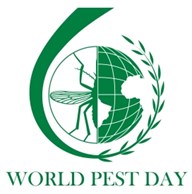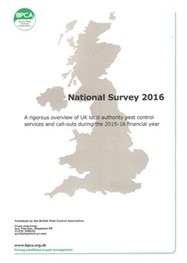World Pest Awareness day is designed to create awareness with citizens all over the world of the important role the professional pest management industry plays in protecting public health. So it is somewhat ironic that the BPCA survey reveals that spending cuts by local authorities are leaving parts of Britain increasingly exposed to the threat of a major pest infestation.
| World Pest Awareness Day The BPCA survey results were revealed on World Pest Awareness Day (Tuesday, June 6). This is a global initiative supported by the Confederation of European Pest Management Associations (CEPA), FAOPMA (Australasia) and NPMA (USA). It is designed to raise awareness of the work of professional pest technicians around the globe and the role they play protecting our quality of life. |
 |
Freedom of Information request
These new figures gained, following a Freedom of Information (FOI) request issued by the British Pest Control Association (BPCA), reveal the total number of call-outs per head made by local authorities in the UK declined by 22% in the year to March 2016 and has dropped by 33% since 2011/2012.
BPCA believes the ‘alarming’ slide was due to a significant drop in staffing levels and is calling on councils to ensure adequate funds are allocated to what it describes as a vital facility. Failure to do so, says BPCA, could lead to a major increase in the population of rats, bed bugs and more.
| Results of 2016 national survey All but 26 of the 390 district, borough and unitary authorities in the UK replied to this FOI request. Their responses show the changing landscape of pest control in Britain and how dwindling resources have led to the dramatic decline of a key public service. In the 51 page report it shows staffing levels within UK local authority pest control teams have been slashed by almost 25% since 2012 and that response rates have dropped 33% during the same period. The 2016 survey report reviews five years of data, and for the first time relates activity to population. As well as total numbers, and comparison by region, the report also presents averages and using trend analysis, attempts to forecast future levels of local authority activity. In addition, the report does present some budget data. |
 |
Dee Ward-Thompson, BPCA technical manager, said: “Local authorities are under immense pressure to produce savings and a number of public services are being cut as a result.
“Many councils who once provided pest control free of charge have either introduced charges, or done away with the service altogether, in a bid to balance the books. Our survey reveals many of those still providing pest control are responding to significantly fewer reports. It’s largely down to a lack of resources and that’s really quite alarming.
“It already seems to have had a significant impact on the pest population, according to our members, and the problem is only likely to get worse.
“We want to ensure this does not affect public health and that short-term budget cuts don’t result in higher costs further down the line.Of the 292 local authorities still operating a public pest control service, only seven per cent offer it free of charge.”
Mrs Ward-Thompson added: “This is the most comprehensive study of the demand placed on local authorities for pest control ever carried out.We don’t present it as a definitive story on prevalence, but it does provide valuable data that helps us to plot trends, identify new threats and gauge how government and council policies affects delivery of a vital public health service.”
This is the fourth time BPCA has undertaken such FOI local authority surveys. The first was carried out in 2013 and details of each can be found on the BPCA website.

